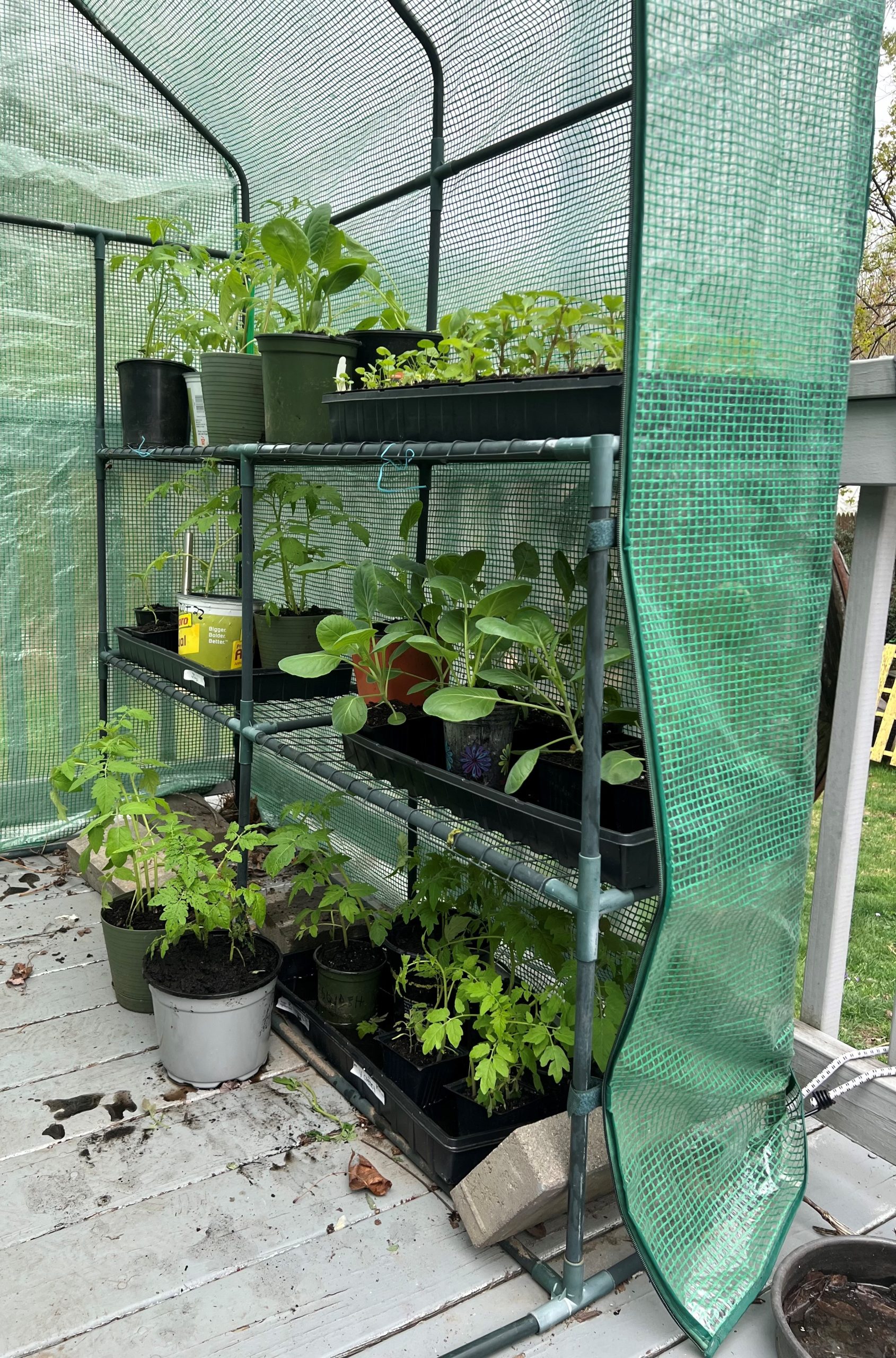Transitioning Your Seedlings – Next Steps

Once your vegetable and flower seeds have successfully grown indoors with your heating mats and grow lights, it’s time to set your seedlings up for success! Here are next steps:
- Transplant your seedlings into larger containers. A general rule of thumb is that when your plant is 4x bigger than the width of its’ container, it’s time to transplant. You can use ordinary garden soil as opposed to potting soil for the newly transplanted seedlings. When you transplant, place the seedling pretty far down into the soil – this will allow it to form deeper roots and be strong.
- Start hardening your seedlings to the outdoors. Preferably, a simple greenhouse is the perfect place to bring your newly transplanted seedlings to the outside. Because it can become very warm in the greenhouse, it’s important to maintain the moisture in the soil by checking the seedlings daily. We purchased our greenhouse at Ocean State Job Lot. https://www.oceanstatejoblot.com/walk-in-greenhouse/product/276538?gclid=CjwKCAjw3POhBhBQEiwAqTCuBtJ8WAi39GYEWzG6plV607nzuFFybVnVoD1yZkjIhI6aXs7YRXGFcRoCuUcQAvD_BwE
- Sow seeds for later season flowers and vegetables. Now is the time to sow indoors flower seeds such as zinnias and marigolds, and vegetables such as cucumbers and zucchini. You can also plant pea seeds directly into your outside garden this time of year.
- Start paying attention to your outside garden area. Bring some new soil into your garden beds, turn the soil used from last year, and purchase any trellises or plant supports, particularly for tomatoes, peas and cucumbers. Maybe place some solar lights in your garden. Draw a schematic detailing where each plant will go to use when it’s time to plant outside.

